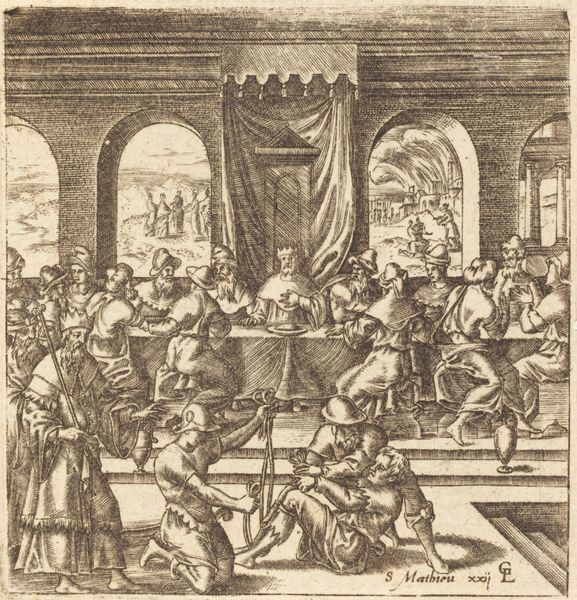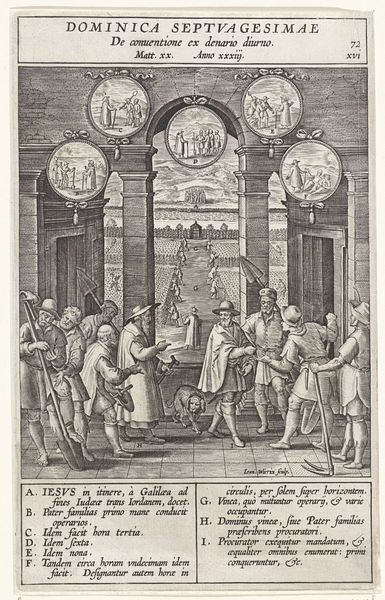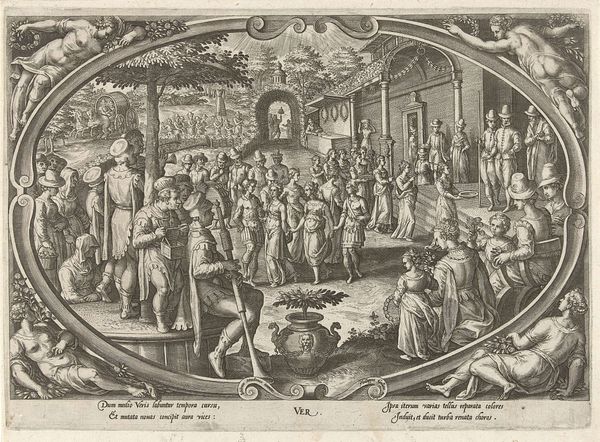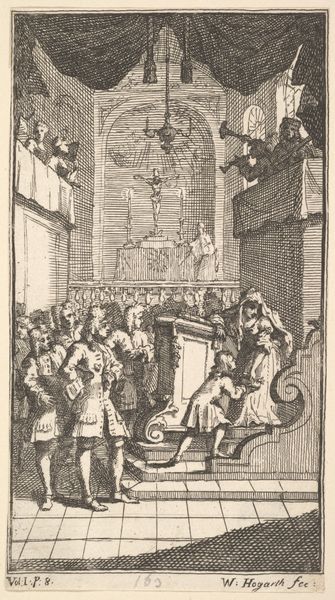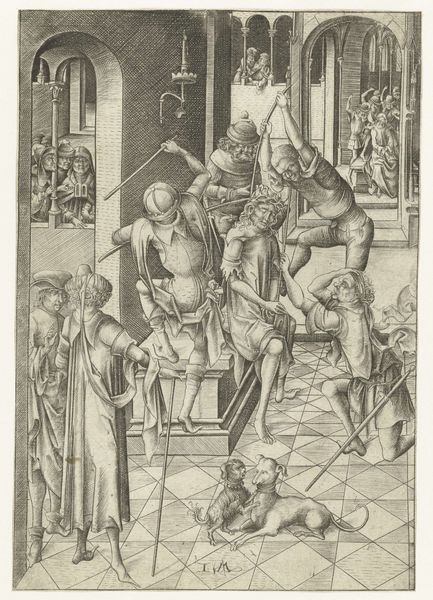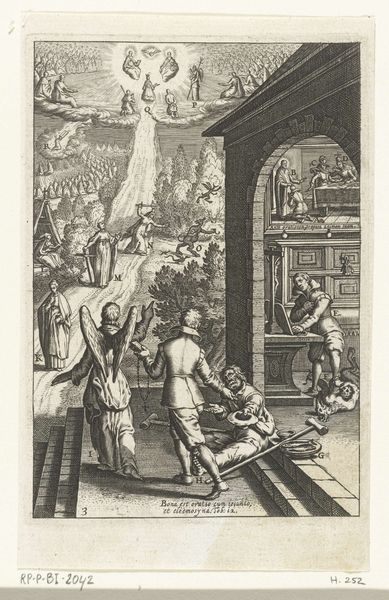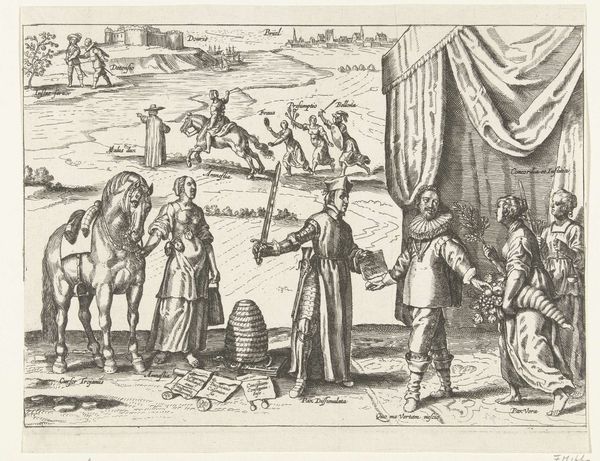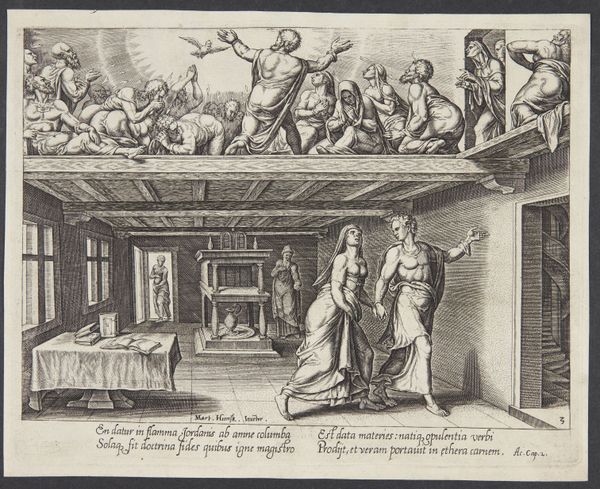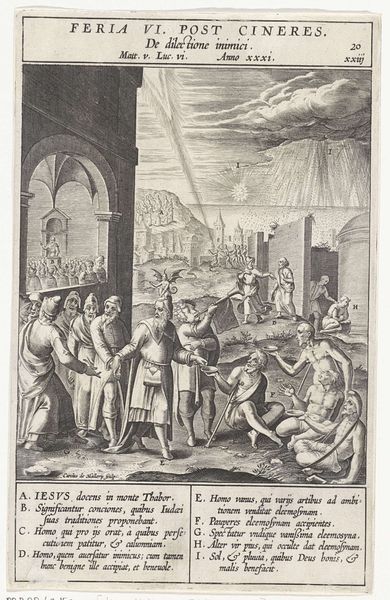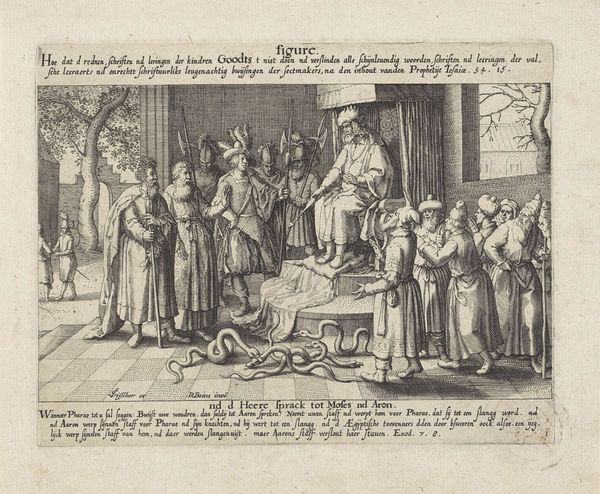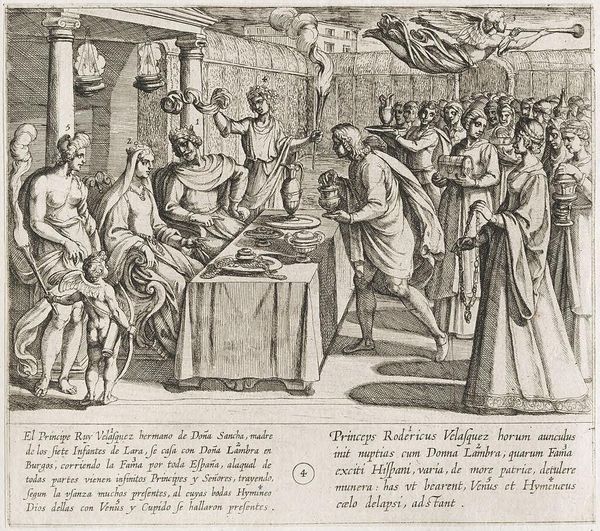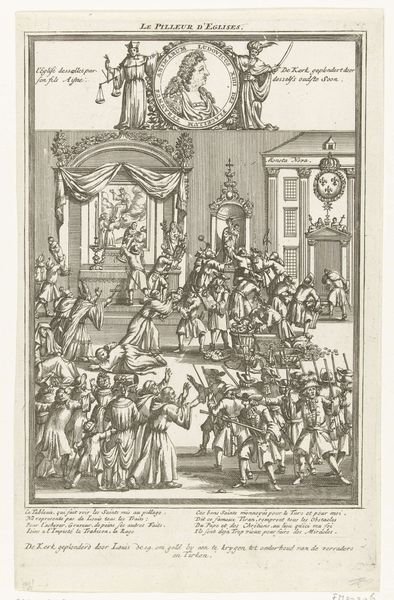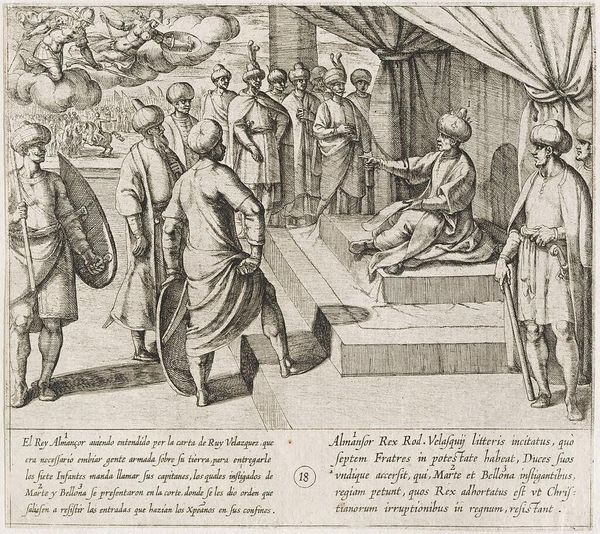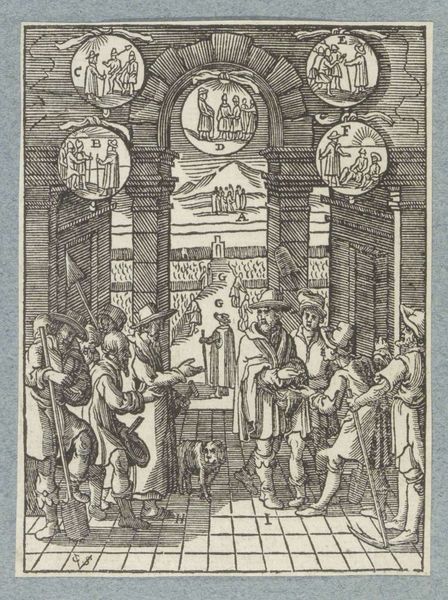
print, engraving
#
narrative-art
#
baroque
# print
#
figuration
#
genre-painting
#
history-painting
#
engraving
Dimensions: height 390 mm, width 318 mm
Copyright: Rijks Museum: Open Domain
Salomon Savery made "De Weegschaal" in 1618, using the etching technique. This process involves using acid to cut into a metal plate, inking the recesses, and then pressing the plate onto paper. It's a relatively indirect method, suited to the mass production of images, and far removed from unique handmade artworks. Notice how Savery uses this reproducible medium to comment on social divisions. On one side of the scale, there is "Gommer," a theologian, representing conservative religious views. On the other, is Arminius, a theologian whose followers opposed Calvinism. The print suggests the scales are tipped in favor of Gommer, favored by the powerful. Consider too, the labor involved in the print's production. Savery, as the artist, would have designed and executed the etching. But the print could then be replicated many times over, distributed widely, and consumed by a broad audience. It's a fascinating instance of how artistic production became intertwined with commerce and religious divisions in the early 17th century.
Comments
No comments
Be the first to comment and join the conversation on the ultimate creative platform.
